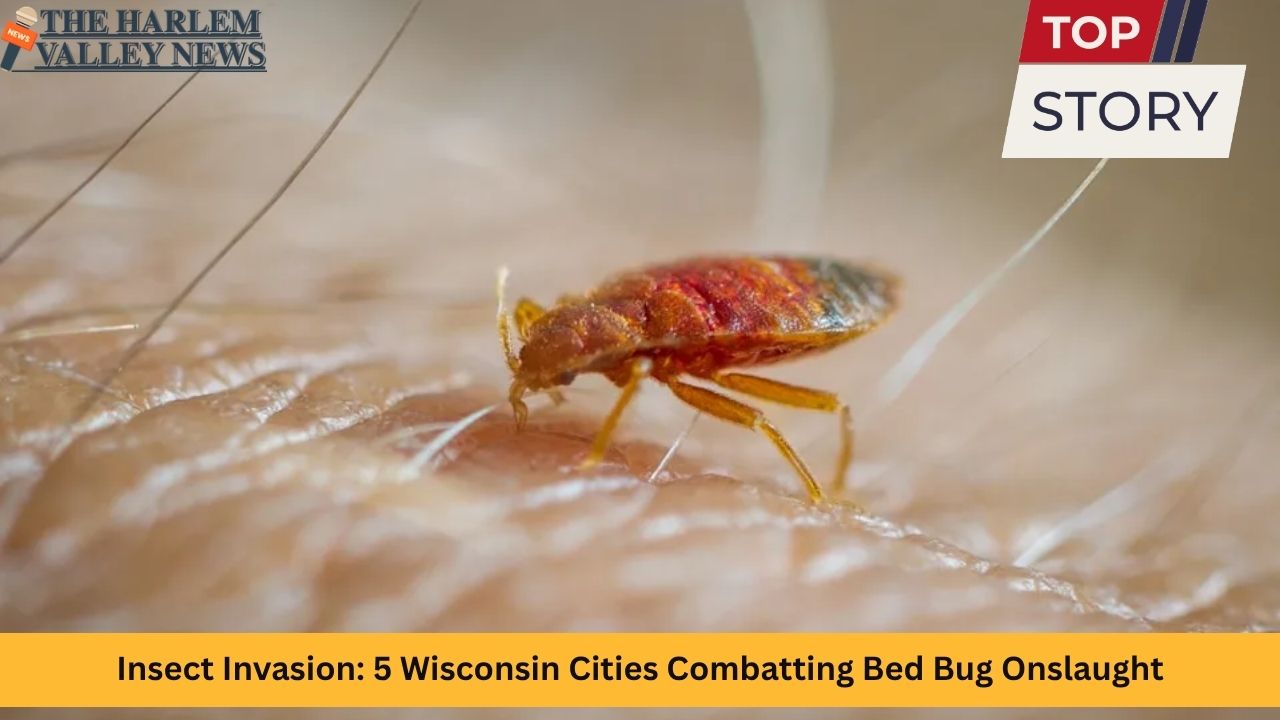The resurgence of bed bugs has become an unwelcome phenomenon across the United States and Wisconsin is no exception. Once considered a problem of the past, bed bugs have returned to urban and rural communities alike, leaving residents on edge and municipalities searching for solutions. These tiny, reddish-brown insects may be small, but their impact is anything but, causing discomfort, anxiety, and financial strain wherever they establish themselves. This article explores how five Wisconsin cities—Milwaukee, Madison, Green Bay, Kenosha, and Appleton—are confronting the ongoing bed bug challenge, sharing statistics, community responses, and expert insight into this persistent pest problem.
Understanding the Bed Bug Threat
Bed bugs are resourceful hitchhikers, thriving in cluttered and clean environments alike. They spread easily in locations where people live, work, and travel, including hotels, apartments, public transportation, and even hospitals. The resurgence in bed bug populations over recent decades is attributed to increased travel, changes in pest control practices, and their growing insecticide resistance. The presence of bed bugs is not a sign of poor hygiene, but rather a testament to their adaptability and persistence.
The Bed Bug Lifecycle and Behavior
Bed bugs are small, flat, wingless insects, typically about the size of an apple seed when fully grown. Their reddish-brown color becomes more pronounced after feeding. These nocturnal insects feed exclusively on blood, predominantly human, and are expert hiders, nesting in mattress seams, furniture cracks, electrical outlets, or behind loose wallpaper. Their bites, often unnoticed at first, can result in itchy welts, allergic reactions, and secondary infections if scratched excessively.
Eggs are laid in hidden crevices and hatch in about 6–10 days. A single female bed bug can lay hundreds of eggs in her lifetime, making severe infestations difficult to eliminate once established.
The Growing Challenge in Wisconsin
Bed bugs are now found throughout Wisconsin, impacting both cities and rural areas. Increased reporting from pest control firms and public health departments highlights a surge in infestations over the past decade. Urban density, local travel hubs, tourism, and communal living spaces contribute to the problem’s persistence and spread.
While no Wisconsin cities are regularly listed in the worst-affected national rankings, local trends reveal significant flare-ups and persistent management challenges, especially in larger cities and their surrounding regions.
Milwaukee: Leading the Battle Against Bed Bugs
Milwaukee stands at the forefront of Wisconsin’s fight against bed bugs. As the state’s largest city, it faces unique challenges due to its size, population density, and diverse housing stock.
The Scope of the Problem
Milwaukee has consistently reported a high volume of bed bug treatment requests, landing it among the nation’s top cities for bed bug infestations in recent years. Reports from pest control services and city officials note an uptick in both residential and public housing cases. In one recent year, local pest control companies performed thousands of bed bug exterminations across the city, including in private homes, apartment complexes, hotels, and shelters.
Community Impact and Response
Infestations have prompted public health campaigns, legal actions, and increased resident complaints. In Milwaukee’s apartment buildings and public housing, bed bugs have created tension between residents and property managers. The city’s housing authority, one of the largest landlords in Wisconsin, has faced lawsuits and widespread calls for more urgent and effective intervention from affected tenants.
Control Efforts
-
Aggressive inspection and treatment programs in public housing.
-
Development of citywide protocols for pest management and tenant education.
-
Partnerships with nonprofit organizations, health departments, and pest control companies to monitor, report, and treat infestations.
-
Distribution of educational materials about identifying, preventing, and reporting bed bugs.
Professional exterminators in Milwaukee now rely on a multifaceted approach: heat treatments, targeted chemical applications, and extensive follow-up inspections. Community events promote best practices such as reducing clutter, laundering bedding at high heat, and checking second-hand furniture before bringing it home.
Madison: Awareness and Swift Action
Madison, the state capital, is experiencing its own uptick in bed bug incidents, attributed to its vibrant student and commuter population, lively rental sector, and broad tourist activity.
Infestation Trends
Local pest control businesses note a consistent increase in bed bug surveys and treatments, especially in the university district and high-density rental communities. Student housing, frequently transitioning between tenants, provides an ideal environment for bed bugs to spread.
Steps Taken by Local Authorities
-
The Madison health department has released clear guidelines on bed bug identification and reporting.
-
The city’s Metro Transit system responds to traveler-reported sightings on buses by cleaning and sanitizing affected areas, emphasizing transparency in reports and follow-up action.
-
Major landlords and property managers have instituted regular pest surveillance in multi-unit dwellings and are proactive in engaging exterminators at the first sign of infestation.
Community Engagement
Educational campaigns in schools, colleges, and community centers encourage the public to avoid bringing in used mattresses or furniture unless carefully inspected. The city emphasizes coordination among tenants, landlords, and pest control professionals—a necessity given the bugs’ ability to migrate between units.
Green Bay: Controlling Outbreaks in Residential and Hospitality Sectors
Green Bay, known for its tourism and sports attractions, contends with an ongoing risk of bed bug infestations in hotels, motels, and dense urban neighborhoods.
Prevalence and Challenges
Hotel managers regularly receive bed bug training, as national reporting databases highlight Green Bay accommodations with recurring guest complaints. Families and property owners face growing awareness that bed bugs are not just a “big city” problem.
Key Measures Undertaken
-
Rigorous inspection and prompt treatment in hospitality venues.
-
Encouragement of staff and guests to report potential infestations at the earliest sign.
-
Investment in professional heat treatments and eco-friendly insecticides designed to minimize downtime for facilities.
-
Preventive initiatives include sealing gaps, cracks, and regular mattress and furniture checks.
Hospitality Industry Response
Many Green Bay hotels have adopted a policy of refunding guests who document bed bug sightings, while immediately removing affected rooms from service for treatment. Staff are trained to recognize early signs of infestation and to communicate transparently with affected guests.
Kenosha: Educating and Empowering Residents
Kenosha, situated along Lake Michigan, faces cross-border risks and serves as a turnstile for travelers between Chicago and Milwaukee. Its schools, seasonal workforce, and lodging options create repeated opportunities for bed bugs to be introduced and to spread.
Rise of Bed Bug Reports
Community health officials in Kenosha have noted a gradual increase in calls and reports related to bed bugs, particularly in multi-family units, motels, and transitional housing. The local government has responded by ramping up public awareness campaigns and providing support to landlords and tenants facing infestations.
Local Strategies
-
Hosting free seminars on pest prevention and identification.
-
Distributing information packets to new tenants and property managers.
-
Cooperating with pest management professionals to provide bulk treatment programs for affected buildings.
The city emphasizes early detection, swift containment, and education, helping empower residents to address the problem before it becomes unmanageable.
Appleton: Innovative Techniques and Community Coordination
Appleton, in the Fox River region, is notable for its innovative local response. As a mid-sized city with a diverse population and robust rental market, it has joined the statewide fight against bed bugs with a blend of new technologies and community mobilization.
Bed Bug Activity and Hotspots
Reports in Appleton spotlight infestations in senior living facilities, short-term rentals, and multi-unit dwellings. Residents are especially concerned about the stigma and costs associated with repeated treatments.
Unique Approaches
-
Several property management firms have invested in canine bed bug detection, a fast and non-invasive method for discovering even minute infestations.
-
The city partners with local clinics to provide resources for vulnerable populations, including free mattress covers and information on chemical-free remedies.
-
Landlords participate in hands-on workshops where they learn to spot signs of infestation and use heat and steam treatments effectively.
Appleton’s success stories often highlight the effectiveness of community-led surveillance and the importance of de-stigmatizing bed bug incidents so residents seek help without fear or embarrassment.
The Economic and Health Impact Across Wisconsin
Beyond the discomfort and nuisance, bed bugs pose economic and psychological burdens for Wisconsinites. Treatment and prevention can cost hundreds to thousands of dollars per incident, with multiple rounds often required for complete elimination. There are also lost revenues for hotels, relocation costs for residents, and time off work during intensive treatments.
On the health side, bites can trigger allergic reactions or secondary infections. More severely, infestations often cause significant stress and even insomnia, as residents worry about recurring incidents or spreading bed bugs to others.
Statewide Support and Advice
Wisconsin public health and agriculture departments provide guidance for managing and reporting bed bugs. They emphasize:
-
Promptly identifying and isolating infested areas.
-
Avoiding the use of untested or over-the-counter remedies, which often drive bugs deeper into hiding.
-
Physically removing clutter and laundering all bedding and clothing at high temperatures.
-
Engaging licensed pest management professionals for best results.
Regular inspections, particularly in high-risk environments like hotels, college dorms, and apartment complexes, are recommended as a key strategy for early intervention.
Practical Tips for Wisconsin Residents
Dealing with bed bugs requires vigilance, cooperation, and timely action. Here are recommended steps for prevention, detection, and response:
-
Inspect bedding, mattresses, and furniture routinely, looking for reddish-brown bugs, shed skins, or dark fecal spots.
-
Be cautious when acquiring used furniture or clothing. Always inspect and, if possible, heat-treat or wash items before introducing them to your home.
-
Minimize clutter to reduce hiding places for bed bugs.
-
Report potential infestations promptly to landlords, property managers, or pest control professionals.
-
After returning from travel, launder clothes at high temperature, vacuum luggage, and inspect belongings before reintegrating them into your living space.
-
Educate family members and roommates about signs of bed bugs and the importance of early detection.
-
Cooperate fully with extermination protocols, which may require multiple treatments and repeat inspections.
Looking to the Future: The Battle Continues
With urbanization, increased movement of people and goods, and continued resistance to conventional pesticides, bed bugs will likely remain a concern for Wisconsin residents into the foreseeable future. However, through education, improved pest management protocols, and community engagement, cities across the state are enhancing their response and resilience.
Milwaukee, Madison, Green Bay, Kenosha, and Appleton each offer unique lessons in public health cooperation, outreach, and practical innovation. The hope is that ongoing commitment to these strategies will help keep Wisconsin’s communities healthier, safer, and—eventually—bed bug free.
Conclusion
The bed bug onslaught in Wisconsin is a formidable challenge, but it is not insurmountable. With continued vigilance, community cooperation, and the adoption of the latest pest control techniques, cities across the state are making significant strides in containing this pest and protecting residents. Whether you live in a bustling metropolis or a small rural community, awareness and decisive action remain the strongest allies in the battle against bed bugs.












Leave a Reply